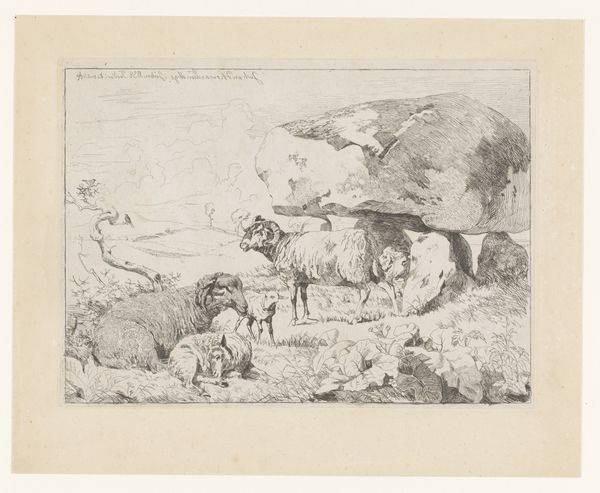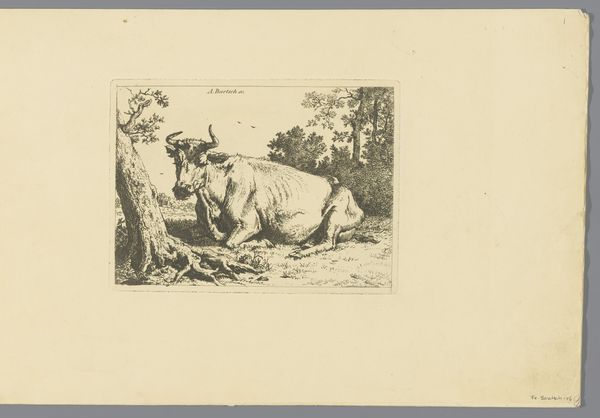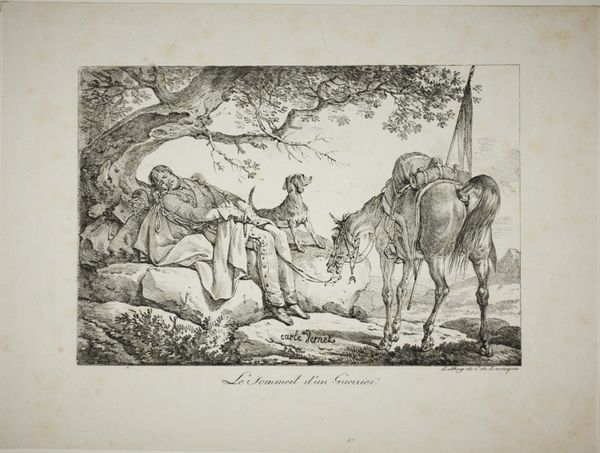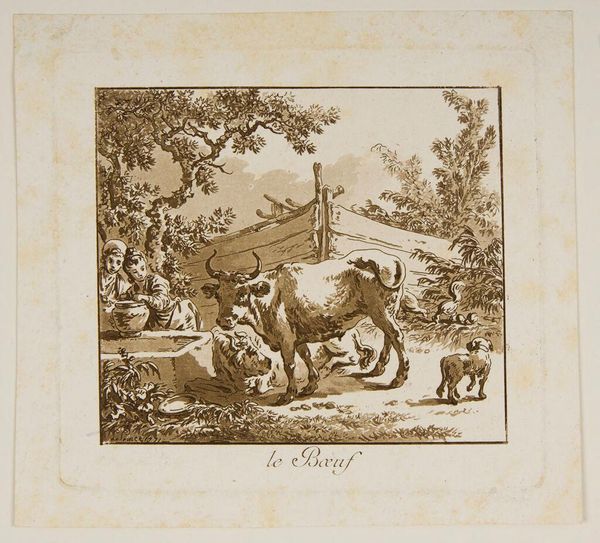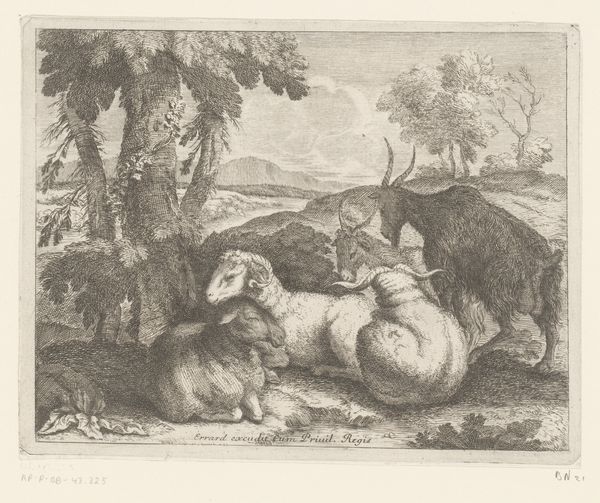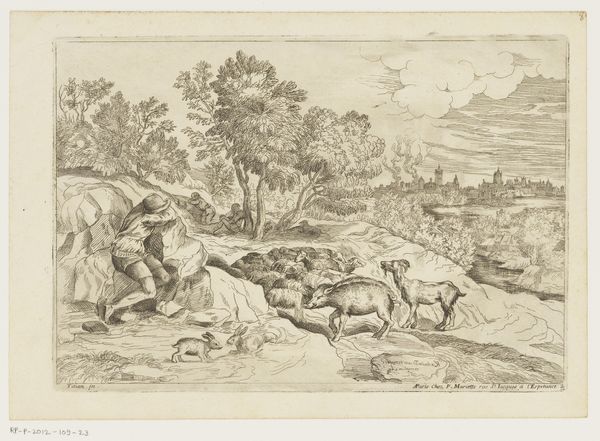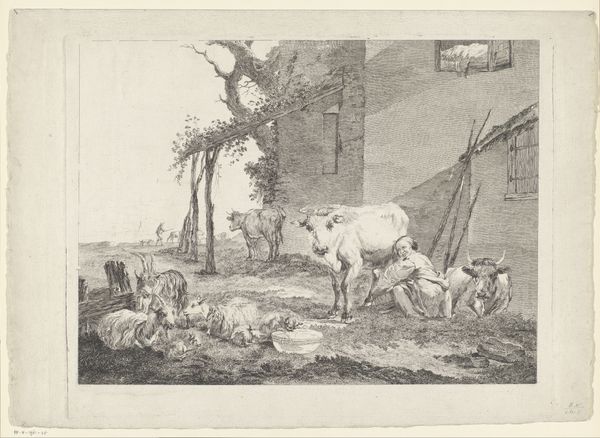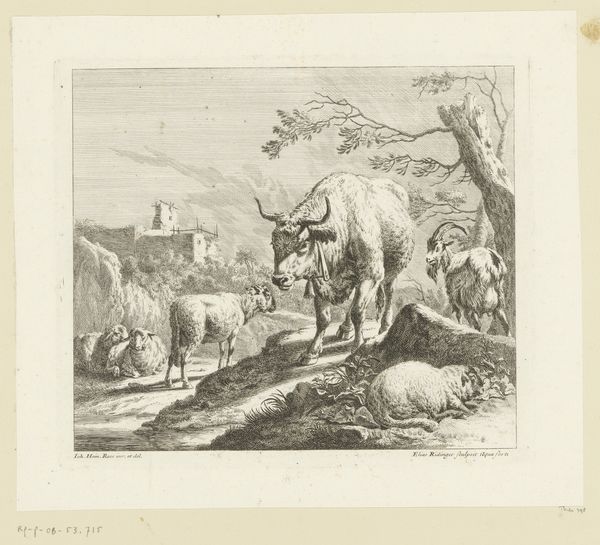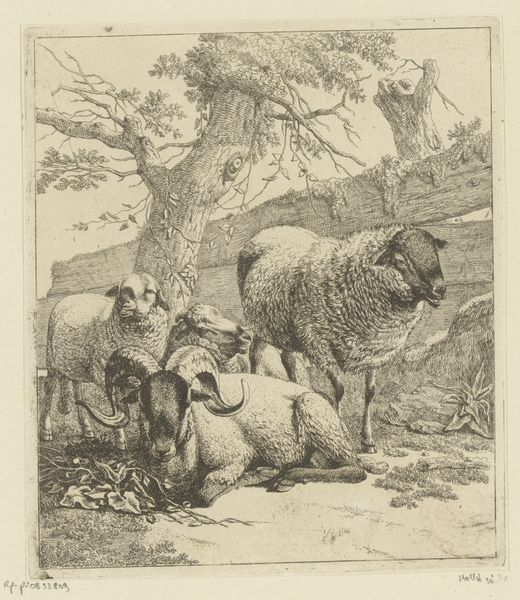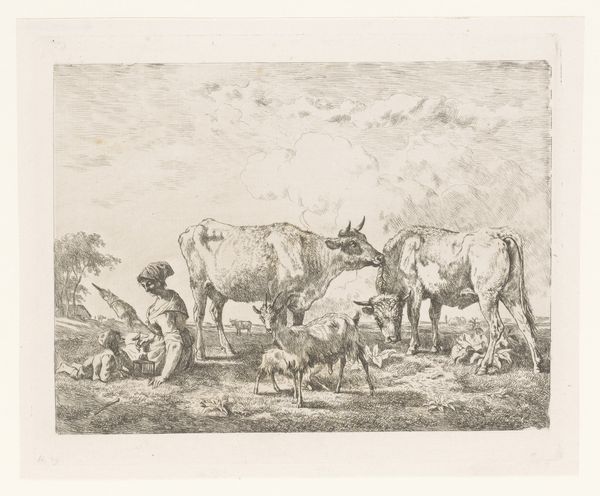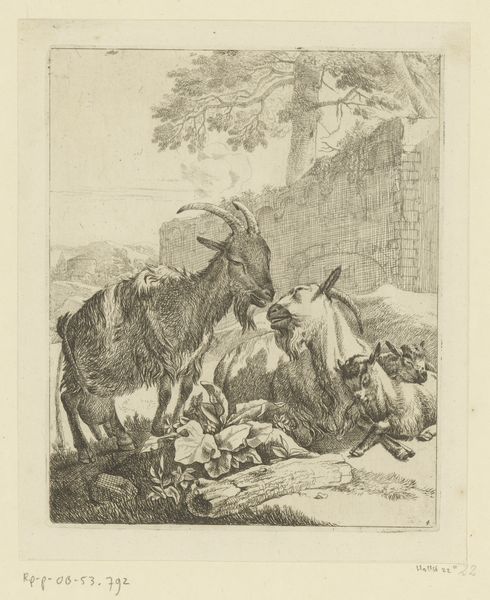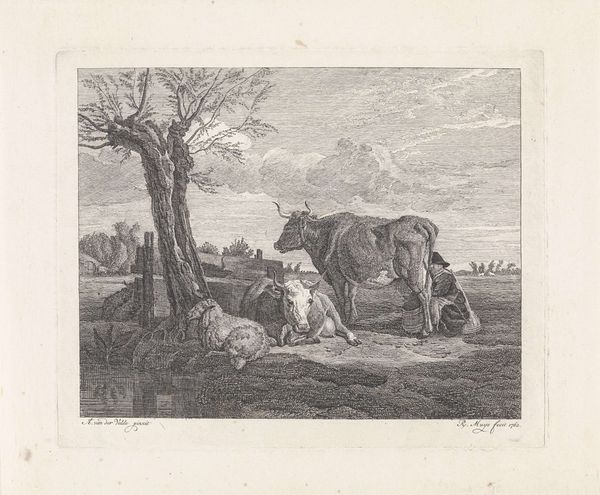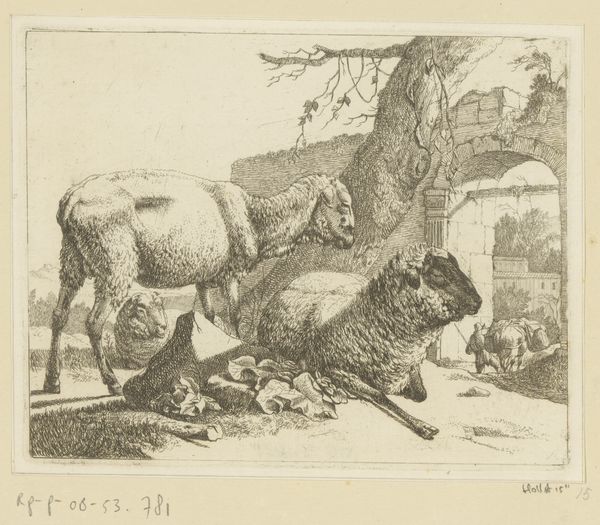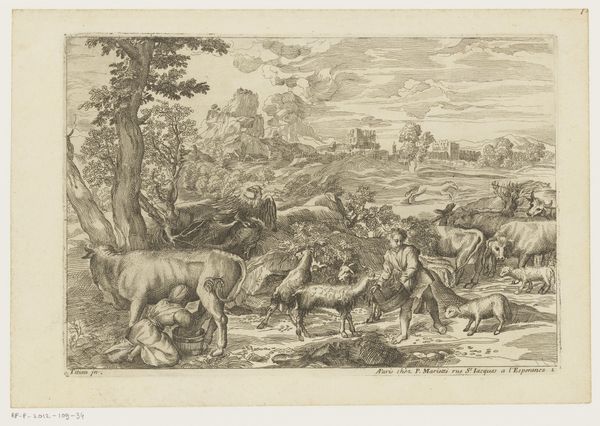
drawing, print, engraving
#
drawing
#
narrative-art
# print
#
landscape
#
figuration
#
11_renaissance
#
history-painting
#
italian-renaissance
#
engraving
Dimensions: height 225 mm, width 285 mm
Copyright: Rijks Museum: Open Domain
Battista Angolo del Moro created this print, Romulus en Remus, using an engraving technique sometime between 1515 and 1573. Engraving, unlike woodcut, relies on metal – usually copper – to create an image. The artist uses a tool called a burin to carve lines directly into the plate. The deeper the cut, the more ink it holds, resulting in a darker line on the print. This painstaking process allowed Del Moro to achieve remarkable detail in depicting the iconic scene of the founding of Rome. Look closely and you can see the textures of the wolf's fur and the musculature of the figures. The engraver's skill transforms a humble piece of metal into a vessel for storytelling, carrying with it the weight of history and myth. The precision demanded by engraving elevates it beyond mere reproduction. It requires technical mastery, and imbues the image with a tactile quality, blurring the lines between craft and fine art.
Comments
No comments
Be the first to comment and join the conversation on the ultimate creative platform.
